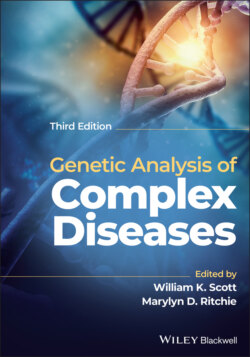Читать книгу Genetic Analysis of Complex Disease - Группа авторов - Страница 49
Achondroplasia
ОглавлениеAchondroplasia, the most common type of short‐limbed dwarfism, is an autosomal dominant disorder. About 85% of cases are the result of a new mutation. It has been observed that the rate of new dominant mutations increases with advancing paternal age (Penrose 1955; Stoll et al. 1982). Achondroplasia is now known to result from mutations in the fibroblast growth receptor 3 gene (FGFR3), located on chromosome 4p16.3. Interestingly, over 95% of the mutations are the identical G‐to‐A transition at nucleotide 1138 on the paternal allele (Rousseau et al. 1994; Shiang et al. 1994; Bellus et al. 1995). This single change causes a gain of function mutation which results in constitutive activation of the receptor, thereby inhibiting the proliferation of cartilage cells, or chondrocytes, and significantly restricting growth in individuals with this condition. Other pathogenic variants in FGFR3 are also responsible for hypochondroplasia and thanatophoric dysplasia, types of dwarfism that are clinically distinct from achondroplasia.
